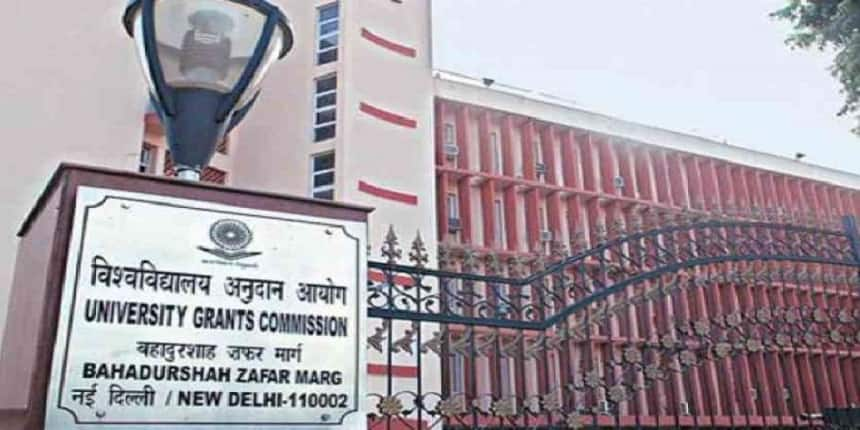UGC draft guidelines on ‘development plans’ cover campus size, recruitment, promotions
R. Radhika | January 31, 2022 | 02:30 PM IST | 3 mins read
UGC has sought public comment on the “Institutional Development Plan” guidelines for universities and other institutions by February 11.

NEW DELHI: The University Grants Commission has released a draft of guidelines on preparing Institutional Development Plan (IDP) for universities and colleges as part of National Education Policy, or NEP 2020 implementation.
The higher education regulator has made recommendations related to campus development and enhancement of institutional infrastructure aligned to the NEP 2020. The UGC has sought feedback and suggestions on these draft guidelines from all stakeholders by February 11, 2022.
The proposed framework requires universities and colleges to develop an institutional development plan to assess human resources requirements, in terms of faculty and administrative staff shortages, physical infrastructural, technology requirements, student support, and teaching infrastructure.
The draft guidelines propose an action plan in order to upgrade academic facilities in each higher education institution to support them to transform into large multi-disciplinary institutions.
The IDP recommendations include the creation of video-based classes, infrastructure for blended learning modes, and online learning. The UGC will also provide financial support to selected universities to improve the academic facilities required for the effective organisation of teaching-learning activities.
Also Read| Union Budget 2022: UGC research schemes stalled as education ministry stops funding
Under the Higher Education Council of India (HECI), which is set to replace UGC, a Higher Education Grants Council will be set up. The HEGC will carry out funding and financing of higher education based on transparent criteria, including the IDPs prepared by the institutions and the progress made on their implementation. HEGC will also be entrusted with the disbursement of scholarships and developmental funds for launching new focus areas and expanding quality programme offerings at HEIs across disciplines and fields
Teacher recruitment, teacher-student ratio
As per UGC, there is a shortage of data on the availability of academic infrastructure in higher educational institutions. The UGC draft guidelines have suggested obtaining and collating information from state governments regarding several low-performing universities including non-accredited colleges to assess the adequacy of academic infrastructure and academic facilities.
For teachers, the draft guidelines propose a “fast track promotion system” for recognising very high-impact research and contribution. Each institution, as per the guidelines, will have to create a “multi-parameter system” for proper assessment of teachers’ performance for tenure, promotion, and salary increments.
To bridge the learning gap, the guidelines further proposed that 50 percent of total faculty requirements can be met through contractual teachers from industry to ensure the balance between theory and practice in professional courses.
Also Read| ‘Rationalise department, teach courses in demand’: UGC to Central Universities
As per the proposed framework, universities will need to have at least one teacher for every 10 students in post-graduate programmes in science and one for every 25 students at the undergraduate level. The undergraduate programmes will need to have at least one teacher for every 15 students in the media and mass communication departments, while the teacher-student ratio should be 1:30 for social sciences and 1:25 for the science stream.
In engineering and management at the postgraduate level, the institutions are required to have one teacher for 10 students. Tribal Universities in remote areas can be allowed a teacher-student ratio of 20 in undergraduate courses, in their first five years of establishment.
UGC guidelines on campus development
The UGC has recommended that for an enrollment of 30,000 students the maximum land area should be 350 to 400 acres for a residential campus with 90 percent residential facilities. Similarly, for enrolment of 20,000 students, the maximum land area should be 300 to 350 acres for a residential campus with 90 percent residential facilities for students, 85 percent residential facilities for staff, sports, and recreational areas along with the academic and research infrastructure.The guidelines also suggest classroom dimensions based on intake. For each student, the classroom should have a 1.5 square meter area.
Also Read| Punjab Election 2022: Higher education hobbled by funds crunch, vacancies, privatization
The guidelines suggest the integration of information technology infrastructure with a special emphasis on sustainable and green architecture on campus. The campus must also include infrastructure that minimises carbon footprint, conserves water, protects ecological footprint by planting trees. Use of renewable energy, recycled materials, and minimising use of fossil fuels is also part of the recommendation. The campus, as per guidelines, must also be wheelchair accessible and disabled-friendly.
Follow us for the latest education news on colleges and universities, admission, courses, exams, research, education policies, study abroad and more..
To get in touch, write to us at news@careers360.com.